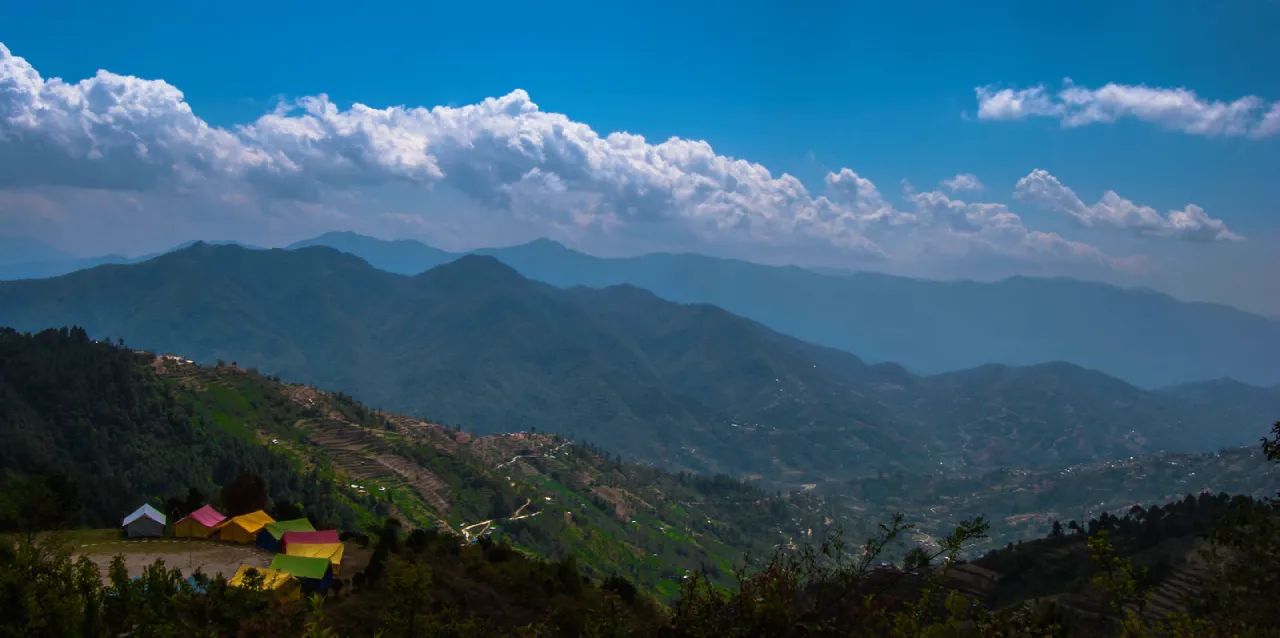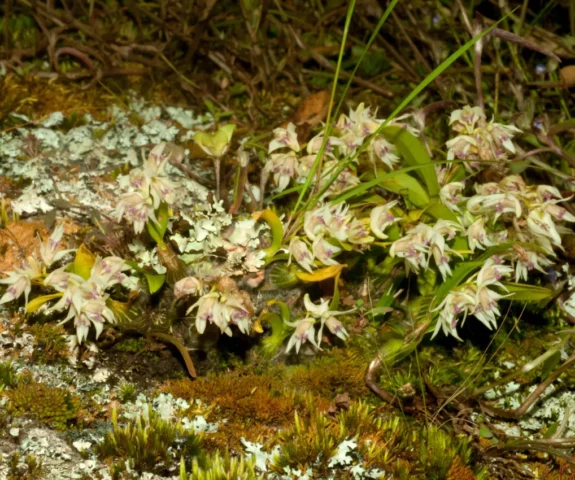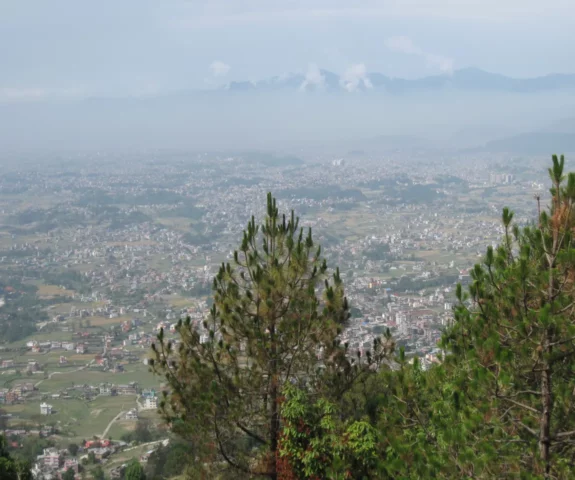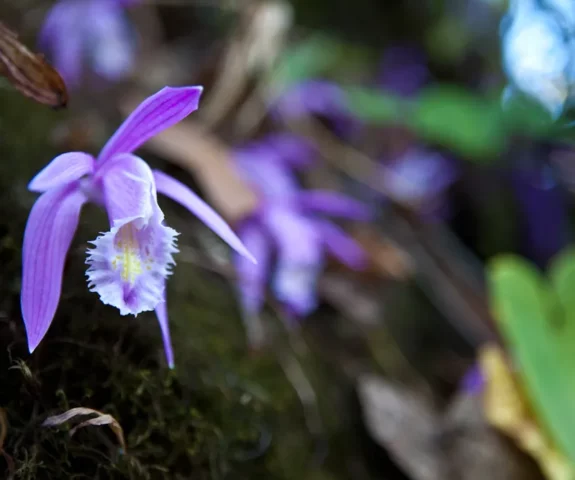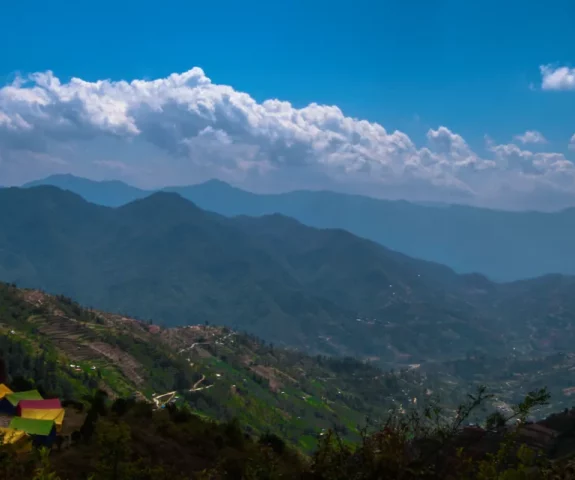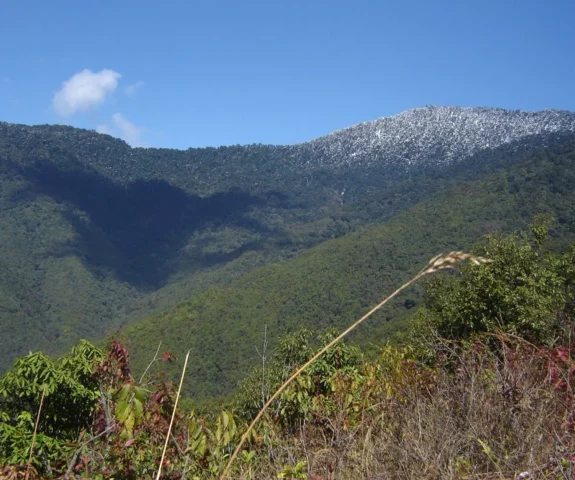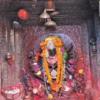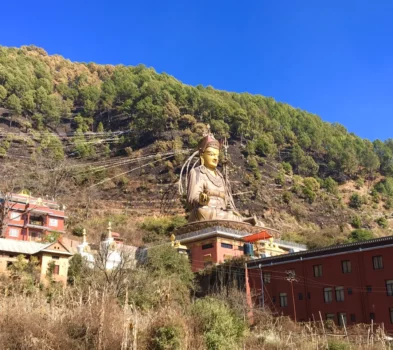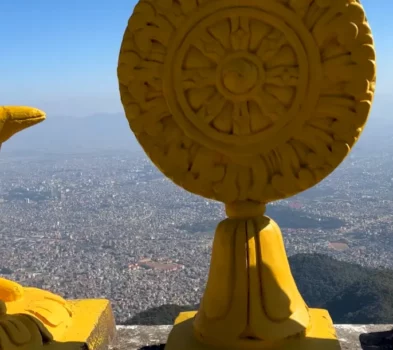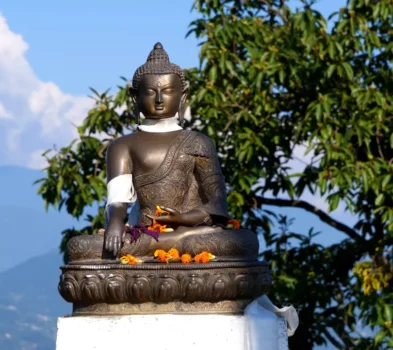Duration
1 DayShivapuri Day Hike
Trip Grade
EasyGroup Size
1-16 PeopleMax Altitude
2,563m. / 8,409ft.Best Season
Mar-May/Sept- NovActivity
HikingTransportation
Private VehicleTrip Customization
On request (click here)Highlights of Shivapuri Day Hike
- Nearest destination from Kathmandu.
- Nagi Gumba is the main attraction.
- Rich in flora & fauna.
- Wildlife and different species of birds.
Trip Introduction
Shivapuri & Nagarjun National Park is the 9th National Park established in Nepal in the year of 2002. Shivapuri day hike is the most popular hiking trail near the Kathmandu valley. Best meditation center for Vipassana. The Shivapuri National Park is located northwest of the Kathmandu valley. It is the second-highest hill near the Kathmandu valley at an altitude of 2563 m and a paradise for bird watchers. On the Shivapuri Day hike trip, you will observe the beauty of the area’s lush surroundings as you hike to the top of the Shivapuri hill, which is the most popular hiking trail near Kathmandu.
After 25 min driving from Thamel, the hike starts from the army check point, Hiking for 2 hours up to the Nagi Gumba, and 3 hours for Thulo chaur. Where you can see the Nagi Gumba Monastery and enjoying the great view from Shivapuri. You can observe the great view of the Kathmandu valley. It is an ideal place for all kinds of hikers to escape from the dust and smoke of the Kathmandu valley.
There are many attractive places inside Shivapuri. Nagi Gumba, Thulo Chowar, and Bagh Dwar are the main visiting points. The only school for female monks, the starting point of the river Bagmati, is inside Shivapuri.
At Himalayan Adventure Treks, we take care of all the important things you need on this tour. We provide you with the finest travel services along with expert guides. Our company offers many other tours and travel packages as well.
Outline Itinerary of Shivapuri Day Hike
Day 01: Shivapuri Peak Hike – A Scenic and Spiritual Journey Near Kathmandu.
Our guests sharing their experiences (Photo/Video Gallery)
Detail itinerary of Shivapuri Day Hike
Day 01: Shivapuri Peak Hike – A Scenic and Spiritual Journey Near Kathmandu.
Morning Start – Hotel Pickup and Drive to Budhanilkantha:
Your day starts early with a delicious breakfast at your hotel, fueling up for an exciting day of hiking and cultural exploration. After breakfast, your guide and driver will pick you up from your hotel and begin the journey towards Budhanilkantha Temple, located 8 km north of Kathmandu. The 20-minute drive takes you through the bustling streets of the capital, gradually transitioning to the more peaceful outskirts where nature and spirituality intertwine.
Exploring Budhanilkantha Temple – The Reclining Vishnu:
Upon arrival at Budhanilkantha Temple, you will witness one of Nepal’s most revered Hindu pilgrimage sites. The temple is home to an iconic 5-meter-long (16 feet) reclining statue of Lord Vishnu, resting on a bed of coiled serpents in a sacred pond. This 7th-century statue, carved from a single block of black basalt, is believed to be the largest stone carving of Lord Vishnu in Nepal.
Hindus revere Vishnu as the preserver of the universe, and this temple holds special significance for both locals and visitors. You will see devotees offering prayers, lighting butter lamps, and performing rituals. While non-Hindus are not allowed inside the main temple, you can still admire the statue from the outside and soak in the spiritual atmosphere.
Drive to Shivapuri National Park – Starting the Hike:
After exploring Budhanilkantha, continue the journey with a short drive uphill to the entrance of Shivapuri National Park, a protected area covering 159 square kilometers (61 square miles) of dense forest and wildlife. Established as a national park in 2002, this area is home to over 500 species of animals, including leopards, Himalayan black bears, deer, and numerous bird species.
Upon reaching the southern boundary of the park, you will obtain the necessary permits before beginning your hike. From here, prepare for an invigorating journey through a lush green forest, ascending toward the peak of Shivapuri Hill (2,732m / 8,963ft).
Hiking Through Shivapuri National Park:
The hike begins with a series of stone steps, making the ascent gradual but physically engaging. As you climb higher, you will be surrounded by towering trees, the chirping of birds, and the fresh mountain air. The trail passes through thick oak, pine, and rhododendron forests, providing a refreshing escape from city life.
One of the key highlights along the trail is Nagi Gumba, the only monastery in Nepal where Buddhist nuns can practice and study Buddhism. This monastery is a peaceful retreat often visited by meditation practitioners, including international visitors seeking solitude and spiritual enlightenment. You can take a short break here, observe the daily activities of the nuns, and enjoy the serene surroundings.
Passing the Source of the Bagmati River:
As you continue hiking, the path becomes steeper and narrower, but the effort is rewarded with stunning views and refreshing air. You will pass by the source of the Bagmati River, a sacred water body that flows through Kathmandu and is highly revered in both Hindu and Buddhist traditions.
Take a moment to rest and appreciate the tranquil setting, as the lush greenery and cool breeze offer a moment of peace before making the final push toward the summit.
Reaching Shivapuri Peak (2,732m / 8,963ft) – Breathtaking Views:
After 3-4 hours of hiking, you will reach the summit of Shivapuri Hill, the second-highest peak surrounding Kathmandu Valley. The reward for your climb is a spectacular panoramic view of the Langtang Mountain Range, along with breathtaking vistas of Ganesh Himal, Dorje Lakpa, and even distant peaks of the Tibetan Himalayas.
From the top, you can also look down upon Kathmandu Valley, where the sprawling cityscape meets the hills and forests. The sense of accomplishment, combined with the stunning natural scenery, makes this an unforgettable experience.
Descent and Return to Kathmandu:
After soaking in the views and enjoying some time at the peak, begin your descent via a shorter route. The downhill trek is much easier and quicker, allowing you to take in different perspectives of the forest and surrounding landscapes. Be sure to walk carefully, as some sections of the trail can be steep.
Upon reaching the base, your private vehicle will be waiting to take you back to Kathmandu. The return drive offers a chance to reflect on the day’s adventure, and you may even spot more wildlife on the way down.
Arriving back in the city, you can head to your hotel to rest, enjoy a warm meal, and look back on the memorable journey through Shivapuri National Park—a perfect combination of nature, spirituality, and adventure.
Activity: Hike, 7-8 hours
Max. Altitude: 2,563m/8,409ft. Shivapuri
Note:
If you have your own private group and want to make your trip private, we can run the custom trip all the day as per your requirements and group size.
Includes and Excludes
What are included with package?
- Hotel pickup and drop-off by private vehicle: You’ll be transported to and from your hotel in a private vehicle for convenience and comfort during your tour.
- National Park fee: This covers the entrance fee to the National Park, allowing you access to explore the natural beauty and wildlife of the area.
- Professional guide and driver: A knowledgeable and experienced tour guide will accompany you throughout the tour, and a professional driver will handle transportation, ensuring a smooth and informative experience.
What are not included with package?
- Your personal expenses: Any additional costs such as phone calls, laundry, souvenirs, or extra services are not included in the tour price and will be the responsibility of the traveler.
- Meals and drinks: The cost of meals and beverages (unless specified) will not be included in the package and should be covered separately by the traveler.
Pick Your Suitable Date
Book a Private Trip
Private & Group Discount Price
-
1 -
1 person
US$ 150
-
2 -
2 people
US$ 100
-
3 -
5 people
US$ 90
-
6 -
10 people
US$ 80
-
11 + people
9999
US$ 70
Total Cost:
US$ 150
Route Map & Altitude Chart
Kathmandu Hotel
Start/End point
Kathmandu Hotel
Trip Information
Physical Fitness:
Many people have questions as to what level of physical fitness is required for trekking in Nepal and that is extremely reliant on what activity the visitor is engaging in Nepal With that said, for a standard easy trek to Extreme hard level of trekking. The daily activity (trek) would be 5-6 hours,(depend on the trekking trail) and elevation will generally not exceed 5,600 meters like Everest Base Camp, Throng la passes, Chola passes treks and other passes or Base Camp but some of them are less than 4000m.
The trekking day is involving both long steep climbs, and descents with a variety of terrain underfoot from well-trodden paths, to rocks covered with ice or snow, depending on the season. Mostly a day would include a number of climbs or descents of 600 meters more or less, starting after the early morning breakfast, resting at a lunch place in the afternoon, then continuous trekking until arriving at the teahouse.
In preparation for the trekking in Nepal, it is important, to begin with, the basic training requirement at least 2 months before departing for trekking in Nepal. Two to three hours of aerobic exercise like running, walking, swimming, cycling & some gym work per week is the minimum and most will find it beneficial to add some basic strength training to their physical fitness routine required for the hard trekking and for normal and easy trek just have some physical fitness is enough.
One of the best ways to prepare is to take practice hikes with a daypack roughly the same weight as what you will be taking during the trek. Your calf should be enough fit and prepare for trekking. Mostly during the trekking calf pain or tiredness is the main issue. Do this only after a baseline of fitness has been reached. Moving fast is not our goal, will provide a more enjoyable and safe adventure trekking in Nepal for all easy and hard level.
Trekking Seasons in Nepal:
There are main two seasons in which Nepal where the most amount of visitors visit. (September, October & November) being the most popular season which is also called the peak season in Nepal, and spring (March, April & May) coming in close behind which is also called the mini-season in Nepal. The summer months of June, July, and August are the monsoon season and most of the time raining as such the trails are mostly washed out sometimes, and roads can sometimes be impassible due to landslide activates. Nevertheless, you can trek to rain-shadow regions like Upper Dolpo and Upper Mustang during the monsoon seasons. Nepal is a suitable destination for all seasons.
Winter is very dry & extremely cold and all the high passes become inaccessible due to ice and snow conditions. The temperature doesn’t usually fluctuate during the day time temperature is around 20-25 degrees. However, you gain altitude the temperature decreases. The temperature can drop to around 0 to -25 degrees at night when staying at tented camps in Himalayan regions.
Winter trek in higher altitudes is not advised due to the danger of avalanches and also altitude sickness. Although some may enjoy the sight of the snow-covered mountains as you reach your destination. However, the temperature does not change as much in lower mountain regions the nights are slightly colder than days’ time.
Autumn &Spring is the best timing for trekking in Nepal because the weather is generally warm and dry, and flowers are in bloom in the lower elevations of the country on the same time you can see the many festivals during that period.
Trekking Day:
A typical trekking day begins with the early morning breakfast around 7 am in the hotel. (Depend on the trekking region). It would advise you to pack your trekking gears in a duffle bag and essential supplies in your day pack after having breakfast; we begin the trek and head along the trail at around 8 am. The morning walk is more energetic to be longer as we begin with refreshed bodies and enthusiasm.
A good morning’s walk, we make a stop for lunch at around 11-12 pm. The lunch involves group meals enjoying the vicinity around the stop & enjoys the organic & local food in the mountain. After resting for about an hour or two, we resume our trek to reach the teahouse or camp by 2-3 pm. The afternoon walk is relatively shorter and can involve games and side trips as organized by the trekking experienced guides. You also can enjoy breaks during the trek to relax, read, and stroll around the area, or doing yoga. You can explore with the local people and observe their lifestyle & culture. Dinner is served around 7-8 in the evening to round off the day.
Meals and Accommodations:
During the trekking period, the accommodation is commonly referred to as teahouses. These are family-run basic lodges that fill the role of the restaurant, Dining hall, and boarding house for tourists. Now a day’s electricity can be found in the rooms, which means one light bulb, and one or two outlets for charging electronics. The common areas are also lit by electricity. Alternatively, teahouses may also use solar, hydroelectric, or have electrical lines running into the village, so the commonality and availability of electricity may vary. Still, a few of the trekking route electricity service is not available. Use the local traditional kerosene light.
Most of the teahouses have private rooms, though if the trek is in a more remote or high altitude place there are limited teahouses so season time dormitories are the norm. Most of the room has 2 single beds with basic bedding, and the bathroom is shared. Some of the places we can get the private bathroom also with a mix of western and squat style toilets in the bathrooms.
Breakfast and dinner are taken at the same teahouses and these lodges have large family-style dining rooms centered on a stove or coal to provide heat basically in mountain areas. Most of the area’s menu will have Nepali-style western foods such as pancakes, pizza, burgers, fries, etc. Also on the menu is the traditional Nepali food Dal Bhat meal. This is a lentil soup with rice, vegetable, Pickle, or meat curry. Most menus will also offer a smattering of local cuisine.
Internal Flight Delays:
Nepal is an incredible and beautiful country of mixed of the White Mountains, deep valleys, Landscape, rivers, and green rolling hills. With this incredible diversity of landscapes, road travel can be extremely time-consuming and flights within Nepal to reach popular trekking destinations is the easiest way. Not all the trekking destination has flight service so road transportation is the only option. Mountainous terrain also comes with the possibility of in-climate weather. It mentions the incredibly high number of visitors during peak seasons makes internal flight delays a very real possibility. To manage this situation it may be helpful to have a few extras days on either end of your tour.
If any cancellations or flight delays do occur (high chances of flight delays from around Kathmandu to Lukla, Everest region, Pokhara to Jomsom, Annapurna region), we also provide services to arrange chopper on the last stage to help you to be on your schedule on the premises of Civil Aviation Rules in Nepal which state that helicopters can fly if the visibility is 1500m.
The cost ranges from USD400 to USD650 according to the number of passengers. The payment can be made either to the helicopter company or to us directly and can be made either by cash or using a credit card. It will be very helpful to purchase and review your insurance as some of the alternative measures for travel may be covered by the insurance companies. Flight insurance may cover changing your international flight if it is necessary.
Travel Insurance:
Most expeditions, Adventurous trekking, and tours require that travel insurance and it is purchased prior to arriving in Nepal, but other normal treks and tours may not require. However, travel insurance is definitely an important consideration. There are a number of reasons to consider insurance. Firstly, it may be required, so check to see what is being asked for by the company. Second, Nepal is a landlocked country, and there are only a few direct flights. Travel in and out of the country can encounter some disruptions if purchasing insurance, make sure flight delays and cancellations also included.
Always choose insurance that, though every safeguard is in place during your Holiday, there are always extenuating circumstances that may result in an accident during trekking & tours. Read carefully printout of insurance policies to ensure that the trekking or any other activity you are engaging in is covered or not, as some policies have stopped covering trekking in certain places. If you are going above 5000 m or high always mention the policies so it’s cover the chopper service in the last condition. It is very important that if you have the comfort of good insurance, so do the research and choose carefully which makes your trip relaxing and joyful.
Nepal Visa Entry Procedure:
There is only one International airport which is the Tribhuvan International Airport in Nepal. Immigration Office, TIA (Tribhuvan International Airport) under the Department of Immigration has been facilitating tourists flying to Nepal by providing visas on Arrival.
‘On Arrival’ visa procedure is very quick and simple. October, November, March, April can expect some queues during peak Tourist season and October is basically the Nepalese got the Main festival Dashain. You can also get Visa from Nepalese Diplomatic Missions stationed abroad prior to your arrival. The choice is yours.
Visa obtains from Nepalese Diplomatic Missions, and then you must enter Nepal within six months from the visa issued date. Your total stay is counted starting from the day you enter Nepal.
Visas obtained on Arrival at the Entry and Exit points are ‘Tourist Visas’. They bear multiple Re entry facilities. Tourist Visa ‘On Arrival’ is the only entry visa to Nepal. If you are visiting Nepal for purposes other than Tourism (sightseeing, tour, travel, mountaineering, trekking, visiting friends and families), you should still get a ‘Tourist Visa’ to get into the country. However, you must change the category of visa as per your purpose and length of stay in Nepal from the Department of Immigration by producing the required documents.
Please click below for the online Visa form.
http://online.nepalimmigration.gov.np/tourist-visa
The following visa rules apply for tourists:
For 15 days Multiple Entry Visa, the visa fee US $30 or equivalent foreign currency.
For 30 days Multiple Entry Visa, the visa fee US $ 40 or equivalent foreign currency.
For 100 days Multiple Entry Visa, the visa fee US $ 100 or equivalent foreign currency.
According to the immigration regulations, a tourist is allowed to stay in Nepal only for 150 days a year. You can extend the visa up to another 90 days.
US$ 2 or equivalent Nepalese currency per day for extension.
Additional US$ 25 or equivalent Nepalese currency on visa fee, if Multiple Entry facility is required for the extended period
For more details please visit our FAQ link
Acute Mountain Sickness (AMS):
Acute Mountain Sickness (AMS) is usually seen in un-acclimatized people shortly after ascent to high altitudes. The condition occurs due to the thinning of air as the altitude increases. The condition, if not taken seriously and treated immediately, can be life-threatening and its symptoms can be seen generally above 3200 meters. The symptoms of Acute Mountain Sickness are nausea, vomiting, tiredness, shortness of breath, and cerebral pain.
The itineraries are designed to properly acclimatize you to the change in high altitude climate and sufficient precautionary measures too are taken to take utmost caution for our valuable guests. Our staff also equipped with cell phones and satellite phones (Option) in the occurrence of any emergency cases. We are greatly driven to keep the safety and security of our clients as our foremost concern.
Drinking-Water:
Water is essential for life, and clean water is imperative while on holiday. When visiting less developed countries like Nepal it is a concern that all travelers should consider. There are few options when trekking or traveling in Nepal that will mitigate any chances of drinking contaminated water. The first consideration to take into account is that tap water should not be ingested. That even means when brushing your teeth in an urban area. Most will choose to buy bottled water and if doing so make sure the cap has sealed properly.
Plastic bottle reuse is a big problem, and with that being said there are other options on the market to assist in making water drinkable. Mountain spring water is drinkable but if you use the purified tablet. The conservation area project also sells this tablet for most of the trekking area. A guide will assist you to find out it also.
Arrival Instruction:
Upon your arrival at Tribhuvan International Airport (TIA) Kathmandu Nepal, our company representatives are stationed to welcome you to the country. We request you to carefully look for your and company name placard being held by our representatives following the events upon landing. Our representatives will be responsible to escort you up to your hotel in Kathmandu. There are many brokers, Taxi drivers, and trouble maker people offering you to carry your luggage and take you to your destination as you exit from the gate. We request you to pay no attention to these people and follow the company representatives and follow their instructions.
How to Book Your Tour:
Before booking any tour or trekking please read all the terms and conditions thoroughly and call or email the company representative with any questions prior to making any payments. Begin by filling out a booking form and pay the non-refundable deposit. Fill out the form completely and if any confusion contacts the company person so as not to disrupt the expediency of the process. The form may be submitted online or by downloading the form and mailing or Whatsapp the form to your company representative.
It is very important to understand all aspects of the chosen trip, from what’s included and excluded, to the level of service, or even what trip may be right for your level of experience and fitness. Take the time to get all the questions answered so that when booking the trip, it is without trepidation.
Essential Packing Gear for Shivapuri Day Hike
If you have decided to go on a day Hike trip in Nepal, we assure you that you will have a fantastic time ahead. But what should you pack? What will be the right gear to make your trip more fabulous? To help you with this, we have compiled a packing list of essential items that you mustn’t forget to bring along.
- Cash
- A 30 L Daypack that has room for your essentials, such as camera, clothing, water bottle, jacket, raincoat, etc, which will be carried by you
- Protective transport cover for a backpack or travel bag
- Hiking Boots: Preferably ankle-high boots to prevent ankle sprain
- Quick-drying shirts made of synthetic fabrics
- Warm and cool vests or T-shirts
- Sports Bra for Female Trekker
- Hiking shorts
- Sun hat, and sunglasses with 100% UV protection (for hiking trips, even with stray light and nose protection)
- Sunscreen lipstick with a high SPF (at least 20, for a hike trip, or at least 30, or sunblock)
- Drinking bottled water
- Wet wipes
- Hand sanitizer
- Camera with sufficient memory cards and spare batteries, or a battery charger
- Toilet paper
- Map
- Binoculars
Equipment Note:
- Plus, we will also gift you a company logo T-shirt as a token of your Hiking experience in Nepal with us.
Frequently Asked Questions
What is Shivapuri Day Hike, and why is it popular among hikers near Kathmandu?
The Shivapuri Day Hike is one of the most popular hiking trails near Kathmandu Valley, leading you through lush forests and serene landscapes of Shivapuri Nagarjun National Park. It offers stunning views from the Shivapuri Hill (2,563 m)—the second-highest hill around Kathmandu—making it ideal for both nature lovers and adventure seekers.
Where is Shivapuri Nagarjun National Park located and how far is it from Thamel?
Shivapuri Nagarjun National Park is located to the northwest of Kathmandu Valley, and is only a 25-minute drive from Thamel. It is easily accessible, making it a perfect day hike getaway for locals and tourists seeking nature and peace close to the city.
What are the top attractions inside Shivapuri Nagarjun National Park?
Key attractions include the Nagi Gumba Monastery, Thulo Chaur, Bagh Dwar (origin of the Bagmati River), and panoramic views from the top of Shivapuri Hill. The park is also known as the only school for female monks in Nepal, adding spiritual significance to the hike.
How long does the Shivapuri Day Hike take to complete?
The Shivapuri Day Hike typically takes around 5 to 6 hours round trip. From the army checkpoint, it takes about 2 hours to reach Nagi Gumba, and another hour to reach Thulo Chaur or the Shivapuri summit, depending on your pace.
What is the elevation of Shivapuri Hill, and what can you see from the top?
Shivapuri Hill stands at 2,563 meters, making it the second-highest point around Kathmandu Valley. From the summit, you can enjoy panoramic views of the Kathmandu Valley, as well as distant peaks of the Langtang Himalayan Range on clear days.
Is the Shivapuri Day Hike suitable for beginner hikers or families?
Yes, the Shivapuri Hike is considered moderate and is suitable for beginner hikers, families, and even school groups. The well-maintained trails and variety of rest points make it an accessible and enjoyable nature escape.
What kind of wildlife and bird species can be seen in Shivapuri Nagarjun National Park?
Shivapuri National Park is a paradise for birdwatchers, with over 300 bird species, as well as monkeys, deer, wild boars, and sometimes even leopards in deeper forest areas. It’s also home to many species of butterflies and orchids.
Can I visit Nagi Gumba and what is its significance?
Yes, Nagi Gumba is a peaceful Buddhist monastery located inside the park, and is also a center for Vipassana meditation. It is the only monastery in Nepal dedicated to female monks, and offers a tranquil space for spiritual visitors and hikers alike.
Do I need a permit to hike in Shivapuri Nagarjun National Park?
Yes, a national park entry permit is required to enter Shivapuri Nagarjun National Park. You can purchase it at the army checkpoint near the Budhanilkantha entrance, which is also the starting point for the hike.
When is the best time to do the Shivapuri Day Hike?
The best time for Shivapuri Day Hiking is during the spring (March–May) and autumn (September–November) seasons, when the weather is clear and the views are spectacular. It’s recommended to avoid the monsoon season (June–August) due to slippery trails and leeches.

